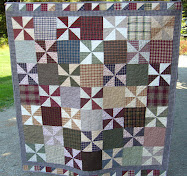Technically it is still September. The 30th- but still September! I did get the opportunity to read "The Joy of Keeping A Root Cellar" earlier this month, I just haven't gotten around to putting up a post for the give away until now.
First, my pros and cons on the book.
Pros: The biggest thing that I love about this book is that the author actually HAS a root cellar on her farm. This isn't someone just writing about what she has researched. Jennifer Megyesi is living it at Fat Rooster Farm in Vermont.
The book has a bunch of information on canning, freezing and drying fruits, vegetables, herbs and meats. It also has some information on smoking meats. The story that Jennifer tells about her homemade smoker is hilarious! You'll have to read the book to find out for yourself.
There are also some great looking recipes included in the book.
Cons: My only real "con" in this book is the section on smoking. I would have loved to have more information on it, including lots of recipes and how to's. The only recipe that is shared in that section is one, "For five hundred pounds of hams." No, really, that's it. Of course, I could reduce the recipe by maybe 10 times to get something accurate on what I'd actually do here at home.
Overall, I really enjoyed this book. I hope that you will too!
To enter the give away please do the following:
1. Leave a comment here telling me what you'd most like to learn from this book.
2. (Optional 2nd entry) Blog about this giveaway for an additional entry and leave a SEPARATE comment telling me you did.
3. (Optional 3rd entry) FB or Tweet this giveaway and leave a SEPARATE comment telling me that you did.
The give away will be open until Friday October 7th.
First, my pros and cons on the book.

Pros: The biggest thing that I love about this book is that the author actually HAS a root cellar on her farm. This isn't someone just writing about what she has researched. Jennifer Megyesi is living it at Fat Rooster Farm in Vermont.
The book has a bunch of information on canning, freezing and drying fruits, vegetables, herbs and meats. It also has some information on smoking meats. The story that Jennifer tells about her homemade smoker is hilarious! You'll have to read the book to find out for yourself.
There are also some great looking recipes included in the book.
Cons: My only real "con" in this book is the section on smoking. I would have loved to have more information on it, including lots of recipes and how to's. The only recipe that is shared in that section is one, "For five hundred pounds of hams." No, really, that's it. Of course, I could reduce the recipe by maybe 10 times to get something accurate on what I'd actually do here at home.
Overall, I really enjoyed this book. I hope that you will too!
To enter the give away please do the following:
1. Leave a comment here telling me what you'd most like to learn from this book.
2. (Optional 2nd entry) Blog about this giveaway for an additional entry and leave a SEPARATE comment telling me you did.
3. (Optional 3rd entry) FB or Tweet this giveaway and leave a SEPARATE comment telling me that you did.
The give away will be open until Friday October 7th.

What better way to be prepared than to have a supply of food at your fingertips that is preserved? Join the Preparedness Challenge!




















.jpg)

















































